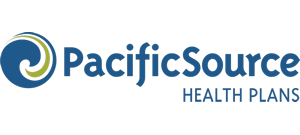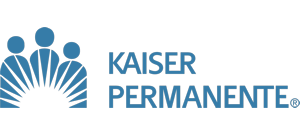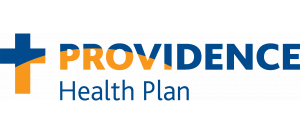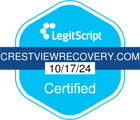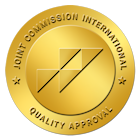Our team at Crestview Recovery, in Portland, Oregon, can help with our addiction resources and guides for families of people with substance use disorder.
Healing Begins Here
IMPORTANT POINTS REGARDING CHILDREN OF ADDICTION
- Children of addicts face emotional and behavioral challenges, with about 8.7 million children under 17 living in households with substance use issues, increasing their risk of developing similar disorders.
- Support systems, including SAMHSA’s helpline, Al-Anon, Alateen, and family therapy, provide crucial assistance in breaking the cycle of addiction and improving the coping abilities of children of addicts.
- Open discussions about drugs, alcohol, and addiction are important. But also, establishing safe spaces for expression and teaching children coping strategies can empower them and mitigate the negative impacts of living with an addicted parent.


UNDERSTANDING THE SHADOW OF ADDICTION ON FAMILIES
- Withdrawal
- Shyness
- Explosive behavior
- Violence
Issues related to self-esteem, attachment, autonomy, and trust are also common struggles faced by children of addicts.
Approximately 8.7 million children aged 17 or younger reside in families where at least one parent has a substance use disorder or mental illness, underscoring the pervasive nature of addiction and mental health issues in family settings.
These children may feel isolated, believing that their struggles are unique and that none of their peers are dealing with similar issues. This isolation, coupled with emotional distress, often leads to enduring challenges such as depression, behavioral issues, and an elevated likelihood of developing substance use disorders themselves.
Drug addiction significantly disrupts the balance of priorities within a family, often leading to the neglect of the well-being of their children and other loved ones. The addicted person, in their struggle, may display authoritarian tendencies and deny their child’s substance issues, often resorting to giving orders and attributing blame to others for their problems. This disruption of family dynamics creates a ripple effect, causing emotional and psychological consequences that extend far beyond the individual battling the addiction.
Young children and teenagers are particularly affected by substance use within families, leading to substantial emotional and psychological suffering. The Substance Use and Mental Health Services Administration (SAMHSA) offers resources and support for families dealing with addiction, highlighting the critical need to address and mitigate the impacts of substance use disorder within families.
The emotional turmoil experienced by the child of an addict is profound and far-reaching. These children endure emotional distress and are prone to experiencing:
- Elevated levels of anxiety
- Depression
- Oppositional behavior
- Behavioral challenges
These factors contribute to enduring mental health issues, including an increased susceptibility to developing drug use disorders themselves.
Offspring of parents with substance use problems face an elevated risk of experiencing abuse and maltreatment, encompassing sexual, physical, or emotional abuse. The enduring traumatic effects of such maltreatment are frequently severe. Additionally, they may experience increased aggression, behavioral challenges, diminished self-confidence, and decreased social skills. However, children can find support from resources such as deep breathing exercises, journaling, and participating in physical activities to manage their emotions.
They can also seek emotional support from dependable adults and external support systems, significantly contributing to their mental and emotional health.
BREAKING THE CYCLE: SUPPORT SYSTEMS FOR CHILDREN
- SAMHSA’s National Helpline
- Access to community and local resources for help
- Educational resources available at schools and with law enforcement
- Support groups specifically for kids dealing with parents who engage in drug use
Support networks are vital in helping adult children cope with a parent’s addiction. These resources provide much-needed guidance, and help and allow kids the opportunity to have their voices heard.
Community-based support systems offer considerable benefits, such as a space free of substance use, enhancing engagement, and fostering a secure, unbiased environment. Schools also provide significant support to children, providing supportive education to children.
Community support is an important resource for children of addicts. Groups like Al-Anon, Alateen, and the National Association for Children of Alcoholics (NACoA) provide platforms where children can connect with others who share similar experiences. Alateen, a part of Al‑Anon Family Groups, offers a secure environment for children of alcoholics to seek support, empathy, and healing through a structured twelve‑step program.
Participation in such support groups provides children of addicts with:
- Peer support
- A sense of solidarity
- Education about addiction as an incurable disease
- Coping mechanisms for the difficulties associated with having addicted parents
To join Alateen, children can reach out to their Area Alateen Coordinator to inquire about the process for certification and initiating a group. Alateen offers regular meetings through their Mobile App for individuals aged 13 to 18, giving them the opportunity to connect with peers affected by a family member’s alcohol consumption.
Besides support groups, family therapy is a key component in substance use disorder treatment. It delves into how substance use is intertwined within the family’s interaction cycle, considering not only the individual’s addiction but also its impact on their family, friends, and colleagues.
Family therapy for substance use involves:
- A flexible family-based counseling approach
- Focusing on enhancing communication and problem-solving skills within the family
- Establishing boundaries
- Addressing family dynamics and roles
- Promoting responsible behavior to create a supportive environment for recovery.
For children of addicts, family therapy offers:
- A secure and nurturing setting where they can articulate their emotions and worries
- Insights into addiction and its impact on family dynamics
- Constructive coping strategies
put in accordion side by side with above image

FROM SILENCE TO EMPOWERMENT: ENCOURAGING OPEN DISCUSSIONS
- Establishing a secure and encouraging atmosphere
- Posting student work
- Establishing non-negotiables
- Admitting when you don’t know
- Reading with your students
- Remaining calm at all times
- Creating a supportive physical environment
- Clear teacher-student communication
- Setting ground rules for respectful communication
Initiating discussions about addiction with children involves protecting them from alcohol and other substances, providing them with information about drugs before they are in a risky situation, and initiating and navigating addiction conversations with thier peers. As parents, it is important to maintain a calm tone, use language that your child can understand, and emphasize the dangers of drugs. Teach them to refuse dangerous substances, and reassure them that their parent’s love is unwavering despite their illness.
Creating safe spaces for expression allows children to share their feelings without fear of judgment or repercussions. This involves setting emotional boundaries, offering support, and providing activities or resources for children to share their experiences and emotions related to addiction or grief. Schools can play a significant role in establishing safe environments for children by actively listening to them, demonstrating empathy, exercising patience. This helps in validating their feelings and experiences, and also provides a secure physical environment.
Art therapy can create a secure space for children to express their emotions by enabling them to channel their feelings into creative forms such as poems, songs, or paintings, offering a safe avenue for processing negative emotions through an enjoyable medium. Support groups also hold significance in providing a secure environment for children of addicts to articulate their emotions, seek assistance, and acquire healthy coping mechanisms.
Parents can establish a secure environment at home for their children dealing with substance use issues by maintaining open lines of communication and providing them with a safe space to openly discuss their challenges and concerns.
Overcoming unrealistic expectations is an essential step in fostering a supportive environment for healing. Children of addicts often experience difficult situations that cause their behaviors and reactions to alter. This could be becoming isolated and afraid of people and authority figures, seeking approval, and having unrealistic expectations of recovery for their parent(s).
To overcome expectations, children can employ various strategies such as:
- Being a consistent and supportive presence
- Expressing emotions through creative outlets
- Establishing routine and stability
- Connecting with support groups or counseling services
- Educating themselves about addiction
- Advocating for their needs and rights
- Recognizing and challenging their own unrealistic expectations
- Practicing self-compassion
- Setting realistic goals
- Seeking support
- Focusing on personal growth and self-care
- Developing healthy coping mechanisms
- Learning to differentiate between their own responsibilities and the addict’s responsibilities.
Professionals advise engaging family members in counseling and education to comprehend substance misuse as a learned behavior and recommend periodically reassessing and modifying expectations throughout the addiction recovery process.

A PATHWAY TO RECOVERY: GETTING HELP AND MOVING FORWARD
The success of an intervention hinges on the preparedness and collaboration of family members, friends, and associates, working alongside a trained specialist.
Understanding the scope of health insurance for addiction treatment can alleviate financial stress and enable access to required care. The Mental Health Parity and Addiction Equity Act (MHPAEA) mandates that health insurers and group health plans must offer mental health and substance use disorder benefits that are on par with the coverage provided for general medical and surgical care.
Typical types of addiction treatment that health insurance usually covers include behavioral health treatment, such as psychotherapy and counseling. Medicaid, a public health insurance program, offers assistance to eligible individuals in paying for addiction treatment. Private health insurance can be utilized for addiction treatment, with the Affordable Care Act (ACA) requiring private insurance companies to provide some form of substance use treatment.
Living soberly can fortify family relationships and foster a healthier, happier future for all members. To foster sobriety within the family, members can participate in activities like walking together, gardening, or joining organized group activities centered around addiction recovery.
The process of rebuilding relationships after conquering addiction involves engaging in open communication, participating in therapy, and seeking support from addiction recovery programs. These steps aid in healing, rebuilding trust, and mending emotional bonds within the family. Involving the family in the recovery process can have a substantial impact on treatment effectiveness and the overall success rate of maintaining sobriety.
A sober lifestyle safeguards children by:
- Establishing a stable and nurturing environment that minimizes their exposure to substance use
- Promoting the cultivation of healthy coping mechanisms
- Facilitating open communication within the family, addressing the emotional and psychological requirements of children affected by addiction.
PROTECTING YOUTH WELL-BEING: PREVENTIVE MEASURES AND COPING STRATEGIES
- Utilizing resources such as SAMHSA’s National Helpline for treatment referral and information
- Promoting consistent communication from parents regarding the risks of substance use
- Establishing clear rules and consequences
These measures can greatly decrease the likelihood of substance misuse and other detrimental behaviors by fostering the early development of healthy coping skills, confidence, and self-worth.
Children of addicts can utilize coping strategies such as:
- Setting boundaries
- Focusing on enjoyable activities
- Finding healthy outlets for expression
- Being caring and consistent in their relationships
- Not prying into personal matters unless it’s welcomed
- Reminding themselves that their parent’s addiction is not their fault
- Practicing stress management techniques like exercise, meditation, yoga, or engaging in creative therapies.
Community centers aid in supporting young people impacted by parental addiction by providing:
- Community-centered mental and behavioral healthcare for children and families
- Treatment for mental health crises or ongoing conditions
- Specialized programs that assist children in navigating family addiction recovery challenges.

Emergency preparedness, such as having a list of safe places and contact numbers, can provide a sense of security for children in crisis situations. Children of addicts can develop an emergency preparedness plan by:
- Accessing resources that provide guidance and support
- Learning how to navigate emergencies and disasters
- Seeking help from organizations that specialize in mental health and substance use services
This will help them be better prepared and feel more secure in times of crisis.
SAMHSA’s National Helpline is a secure and confidential resource that children of addicts can contact during times of crisis. Children of addicts should take steps to establish a network of trusted adults for help in emergency situations by accessing resources specifically designed for them, like websites and organizations such as American Addiction Centers and SAMHSA, which provide guidance on how and where to get help and emphasize the importance of family support.
Cultivating coping skills and self-care practices can help children process their emotions and build resilience. Self-care plays a significant role in the emotional resilience of children with addicted parents. It necessitates a deliberate effort to handle stress and uphold or improve well-being.
Journaling benefits children by helping them:
- Organize their thoughts
- Express their emotions
- Cope with stress
- Reflect on experiences
- Improve their writing skills
Engaging children in creative pursuits such as writing, playing a musical instrument, or painting has been shown to assist in emotional processing for children exposed to family addiction.
Incorporating self-care strategies into the daily routine of children living with an addicted parent can be achieved through:
- Providing a safe and stable environment
- Promoting open communication
- Educating the child about addiction
- Supporting their emotional well-being
- Seeking professional help if necessary
- Prioritizing their self-care and well-being.
HOW TO HELP CHILDREN OF ADDICTS: TURNING ADVERSITY INTO ADVOCACY
Personal advocacy has a positive influence on communities by decreasing substance use, increasing engagement, reducing HIV transmission, and combating stigma. The inclusion of peer support groups in addiction treatment has proven effective in achieving these results. Personal advocacy for substance use plays a crucial role in driving societal change by amplifying voices, providing resources to affected families, supporting comprehensive substance use strategies, and undertaking advocacy and educational efforts to address local conditions.
Sharing personal narratives can substantially raise awareness about the effect of addiction on families, fostering connections, inspiring those facing similar struggles, and showing unity. These stories help in the following ways:
- Mitigating the stigma surrounding parents with substance use disorders by showcasing successful treatment outcomes
- Openly addressing the social stigma
- Challenging biases held by medical professionals and others
Children of addicts can find opportunities to share their personal stories and connect with similar experiences through organizations such as the National Association for Children of Addiction (NACoA), Alateen, and online platforms like drugfree.org and samhsa.gov.
Participating in policy and community action can enhance resources and support systems for families affected by addiction. These actions can result in the creation of improved resources and support systems specifically designed to meet the needs of such families, ultimately fostering healing and progress.
Prevention programs based on evidence-based principles, support groups, family therapy, and counseling are examples of policy changes that have had a positive impact on families coping with addiction.
ADDITIONAL QUESTIONS REGARDING ADDICTION WITHIN THE FAMILY
Yes, addiction can be passed down to children from their parents. This is due to a combination of genetic and environmental factors.
Research suggests that genetic predisposition accounts for about a 50% chance that an individual will develop an addiction. Certain genes can make a person more susceptible to substance use disorders. These genes can influence how a person responds to substances and how easily they develop an addiction.
The environment in which a child grows up also plays a crucial role. Children who grow up in households where substance use is prevalent are more likely to develop similar behaviors. This is often due to learned behavior, normalization of substance use, and increased access to substances.
However, it’s important to note that having a genetic predisposition or an environment conducive to substance use does not guarantee that a child will develop an addiction.
Children living with addicted parents may experience emotional problems such as anger, depression, anxiety, fear, guilt, and confusion, leading to potential long-term psychological effects. This can result in a range of behaviors and emotions, including detachment and secrecy about the addiction.
Drug-exposed babies may exhibit signs such as body shakes, seizures, overactive reflexes, tight muscle tone, fussiness, excessive crying, or a high-pitched cry. It is important to contact a medical professional if you notice any of these signs.
Two-thirds of people in treatment for drug abuse reported being abused or neglected as children, which shows a significant correlation between childhood trauma and addiction.
Effective support systems for children of addicts include community support groups like Al-Anon and Alateen, family therapy, and resources such as SAMHSA’s National Helpline. These resources can provide crucial help and guidance for children dealing with a parent’s addiction.





